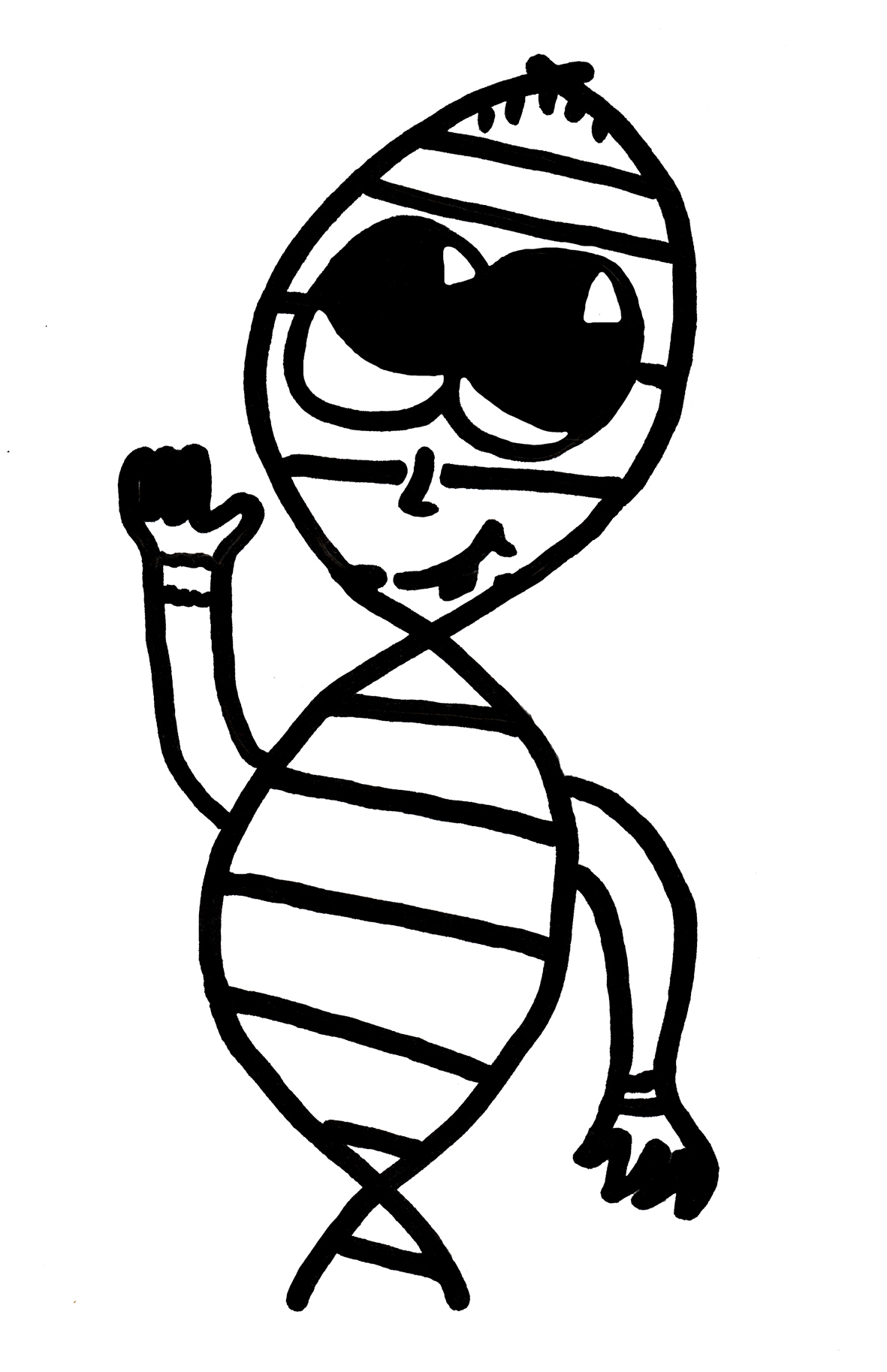
Science Day 2013
Science Festival Theme: Generation
Department of Biochemistry Theme: DNA Discoveries

Our 2013 Event was held on Saturday 16th March and was hosted by Tom Blundell. This was themed around the title of ‘DNA Discoveries’ where visitors of all ages could participate in hands-on activities such as:
- Balloon Models
Visitors selected two balloons which were inflated and twisted to create a double helix. Demonstrators explained that the balloons had to be attached top to bottom as DNA strands are antiparallel. Visitors could use the DNA code to create a DNA sequence translated into their names. This was then written on one of the balloons, while a complementary sequence was written on the other balloon (which had been turned upside down).
- Discover Me - 'Blood' Mixing Experiment
'Blood' (made up of milk/lemon juice and food dye) was put into three sterilins. Visitors could then add samples of 'donor blood' to each of these - the result being that some mixed well while others clotted.
- Discover Me - Fingerprints
Visitors were able to print their fingers and examine the prints to see what they consisted of. Visitors were also shown how to dust for prints.
- DNA Damage and Repair
This demonstration used foam rockets and a target board to explain the outcomes of DNA damage and how our bodies cope with such toxic events.
- DNA Origami
Creating DNA using art supplies.
- Extracting DNA
Visitors could extract DNA from fruit (or their own saliva) using everyday kitchen products.
- Human DNA Model
Demonstrators formed a human DNA model, this was filmed and displayed on a plasma screen throughout the Event.
- Sequencing DNA
Visitors were given a sheet with a DNA template. They then 'acted' as a DNA polymerase and built a new strand of DNA complementary to the strand they were given. They did this by selecting beads from pots labelled A, C , G or T. If a visitor selected a white glow-in-the-dark bead they had to stop building the chain. They then noted the identity of their last bead and repeated until they accumulated enough beads for a bracelet/necklace.
- Structure of DNA Double Helix
This computer demonstration allowed visitors to create a double helix using a variety of graphics.
- Using DNA Information to Make New Medicines
A variety of foam Enzyme puzzles were used, each with a piece missing. Visitors answered questions about the other demonstrations to obtain the missing pieces - these 'drug' pieces were then matched up to the correct puzzle.
Departmental Volunteers: Mona Alqazzaz, Hannah Ambler, David Ascher, Kasia Barbusinska, Bessie Bilsland, Heather Bruce, Adrian Buckroyd, Caia Duncan, Steph Favrin, Jon Foxwell, Grecia Gonzalez, Jessica Goodchild, Chris Green, Xiaolong Gu, Jane Halls, Amy Haynes, Dan Hill, Hee-Jeon Hong, Barbara Humphrey, Harry Jubb, Miriam Llorian, Sarah Lummis, Jo McKenzie, Ian Mickleburgh, Eileen Moison, Sandy Norton, Takashi Ochi, Niyi Opaleye, Flavia Passos, Stephen Rowden, Suzanna Scott Drew, Clare Simpson, Rebekka Weissbach, Peter Whitfield, Qian Wu, Jing Yan, Lesley Young
